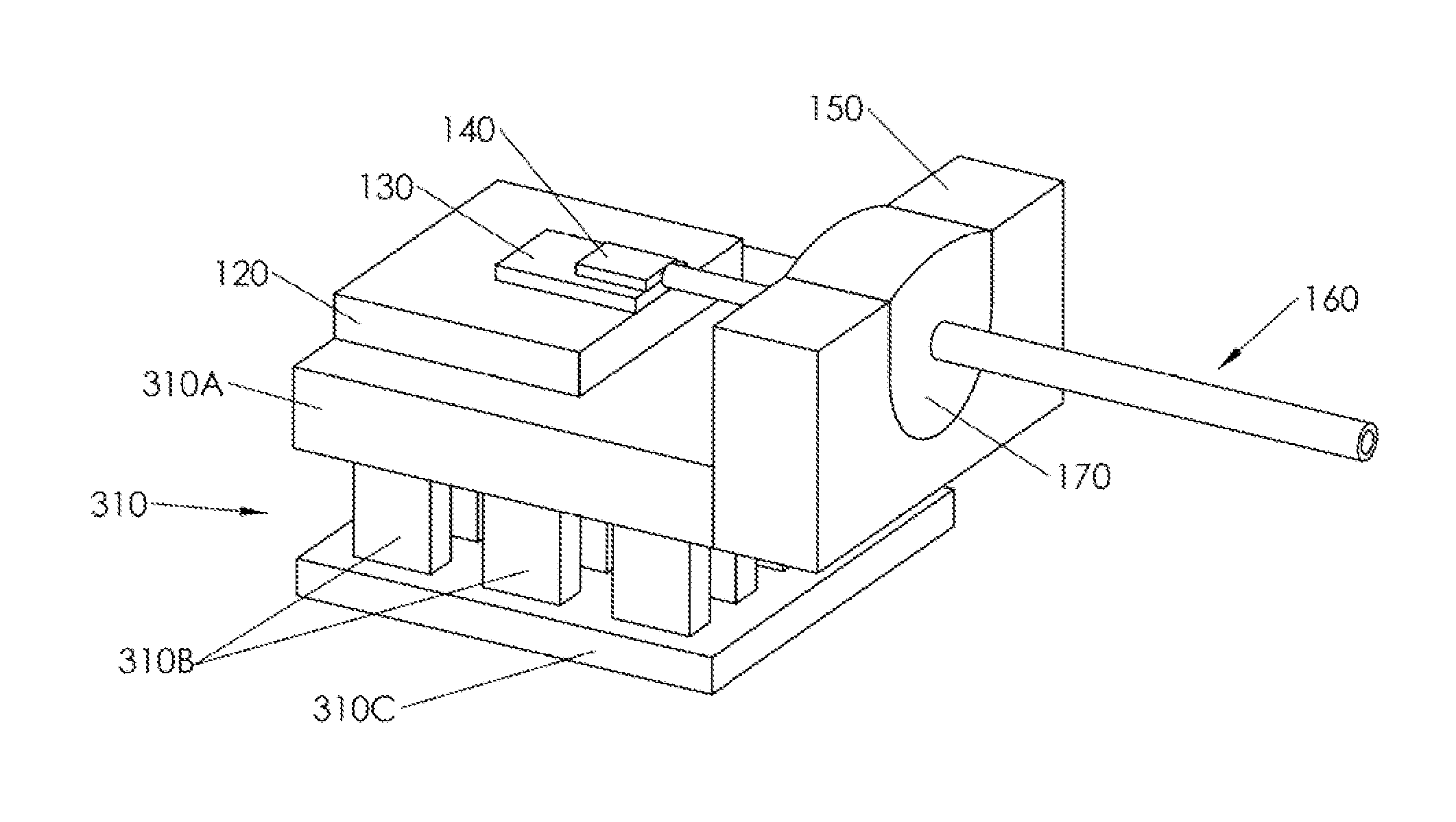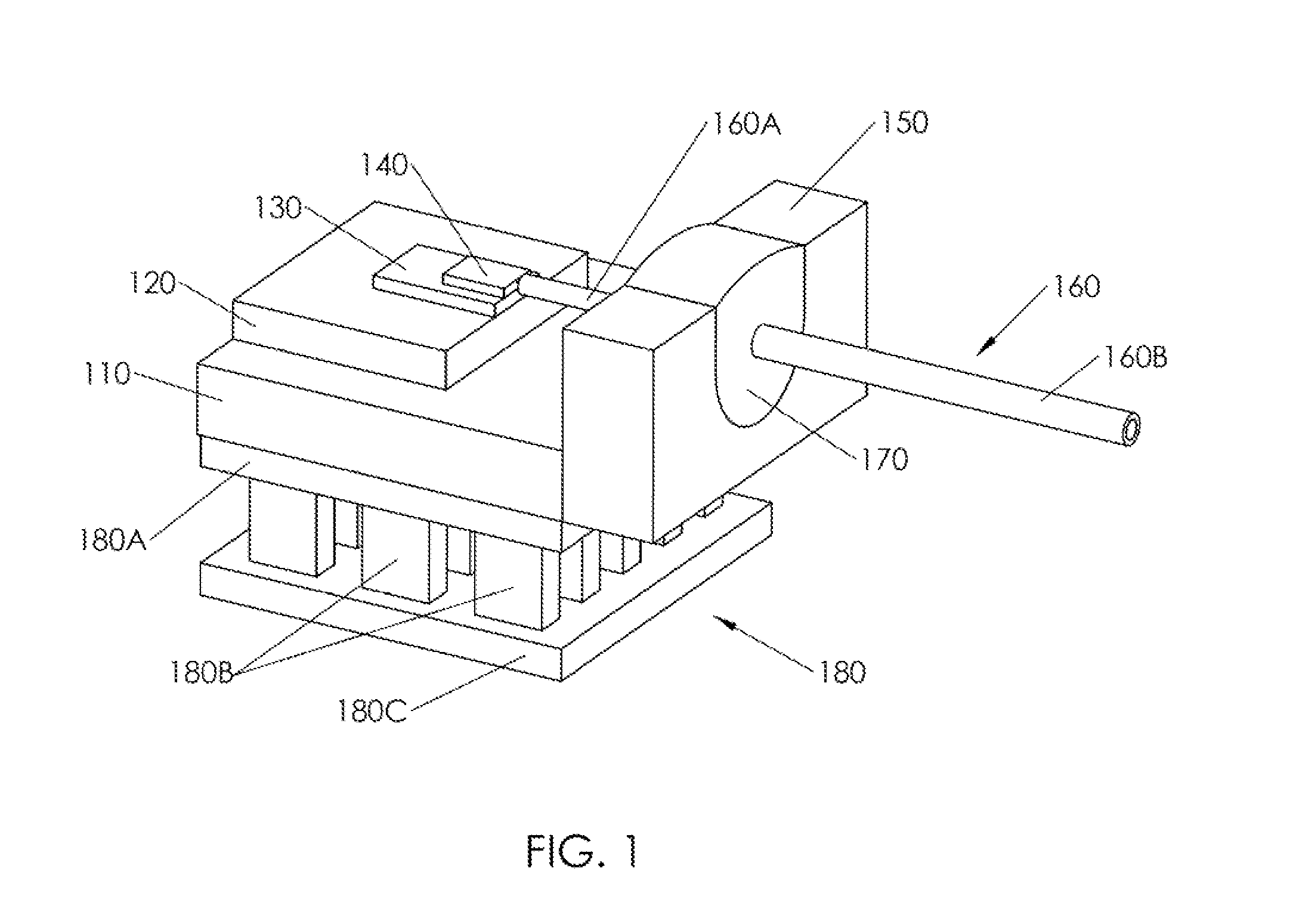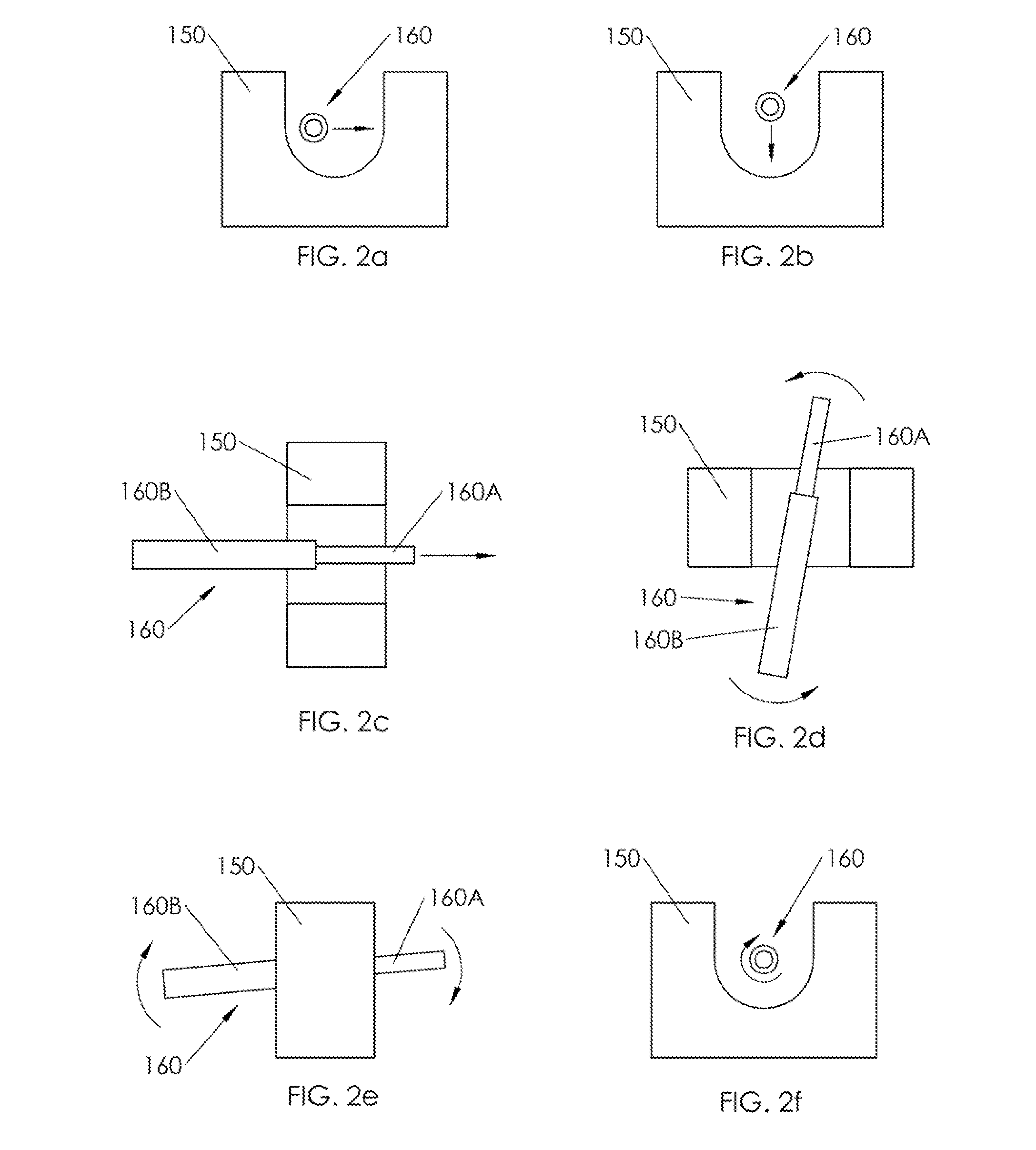When using one or more lasers as light sources in a photoplethysmographic device, the lasers often cannot be placed in the sensor that is positioned in close proximity to, or directly on, the tissue-under-test, as has been typical with LED-based photoplethysmographic sensors.
This might be due to the physical size of the laser device being too large for placement in a conventional finger sensor, or because of the need to position the laser in close proximity to its driver
electronics or
thermal control components.
The use of lasers in photoplethysmography was originally proposed nearly two decades ago; however, no laser-based photoplethysmographic monitors have yet been made commercially available.
It is not as easy for manufacturers to amortize their manufacturing expenses if there are alignment and
assembly steps that require capital-intensive manufacturing equipment or an inordinate amount of
assembly time.
In fields other than photoplethysmography, the
coupling of
laser light to a
fiber (or other types of light guides) typically includes the use of intervening
optics such as ball lenses, cylindrical lenses, polarization maintaining
optics, and optical feedback isolators which increases component count and introduces other opto-mechanical constraints that make such methods expensive and sensitive to misalignment.
A low cost,
low complexity, and versatile solution for laser to
fiber coupling is thus still lacking for use in the field of photoplethysmography.
The design and manufacture of these types of planar
waveguide devices can also introduce significant non-recurring
engineering (NRE) expenses.
And finally, the apparatus of U.S. Pat. No. 4,690,492 does not allow the emitter to be held in close
thermal contact with the remainder of the housing.
This apparatus is inherently expensive in design and requires multiple manufacturing and process steps, including metallization,
polishing, and gluing.
Both U.S. Pat. No. 7,194,167 and U.S. Pat. No. 6,597,843 apparatuses, however, require multiple mechanical parts and have limitations on the
degrees of freedom of the fiber movement, because of the pivoting nature of the alignment methods.
Thus in this design there is an inherent limit in the independence of the
degrees of freedom of movement of the fiber.
Such optical benches have a high initial non-recurring
engineering (NRE) cost to achieve sufficient feature tolerances for placing the laser and fiber components using passive alignment techniques.
They also allow limited flexibility in the emitters that can be used with a specific optical bench, once designed, because the exact size of the laser die and the location of
light emission from the front of the laser die can vary greatly from one manufacturer to another.
This is a significant problem in photoplethysmography because the wide range of laser wavelengths that can be required to make various
analyte measurements may require the use of lasers from several different manufacturers in any one photoplethysmographic device.
Such an approach may therefore be too expensive and inflexible for the comparatively low production volumes required for photoplethysmography.
The use of solder requires that the fiber exterior and the pedestal first be metalized with gold, which adds additional manufacturing steps and cost.
Melting the solder requires the precise placement of heat, otherwise the
semiconductor laser diode could be destroyed, given the typical melting temperatures of even a low-temperature solder.
Furthermore, claim 4 of U.S. Pat. No. 4,296,998 describes the method of using
laser light to melt the solder, which means that an additional piece of expensive
capital equipment must be used in the manufacturing process.
This problem is further exacerbated if heat is introduced during the curing of the
adhesive, which reduces the
viscosity of the
adhesive.
Additionally, positioning the fiber above the pedestal, with the adhesive placed between the two, introduces the possibility of fiber misalignment due to shrinkage of the adhesive during its cure, which would pull the fiber towards the pedestal.
It is less suitable for an application where it is desirable to perform an active alignment and fixation of the light guide in front of a laser whose
light emission location could vary widely.
One other problematic issue with all of the aforementioned non-photoplethysmography-related inventions for laser to
fiber coupling is that the lasers are handled and mounted only in die or
chip form (possibly including a small heat-spreader submount).
The assembly thus requires precision pick-and-place
die bonding and subsequent
wire bonding of these microscopic elements onto the apparatus, which introduces the need for additional expensive
capital equipment for the assembly process.
None of the previously discussed apparatuses are well suited for laser to
fiber coupling for use in the field of photoplethysmography, and this is one of the reasons that there are currently no laser-based photoplethysmographic devices in clinical use.
 Login to View More
Login to View More 


